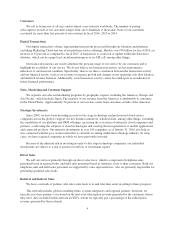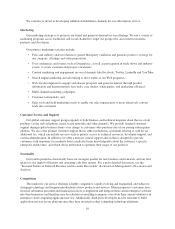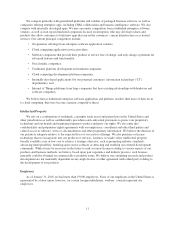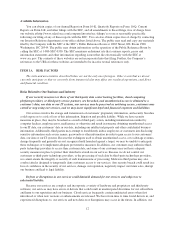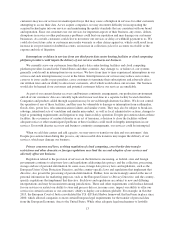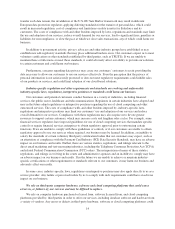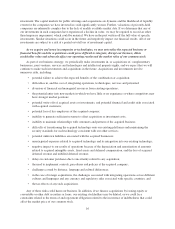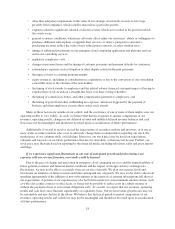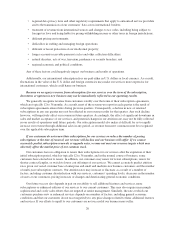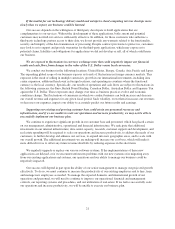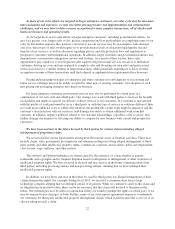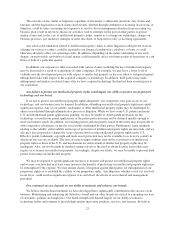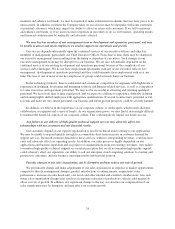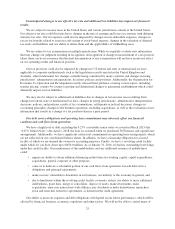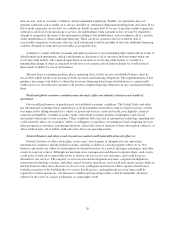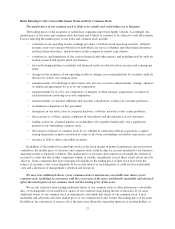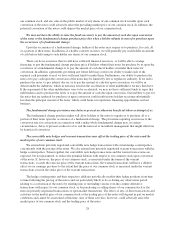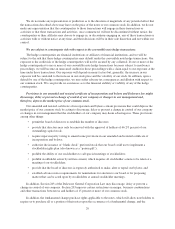Salesforce.com 2016 Annual Report Download - page 26
Download and view the complete annual report
Please find page 26 of the 2016 Salesforce.com annual report below. You can navigate through the pages in the report by either clicking on the pages listed below, or by using the keyword search tool below to find specific information within the annual report.Our efforts to expand our services beyond the CRM market and to develop our existing services in order
to keep pace with technological developments may not succeed and may reduce our revenue growth rate and
harm our business.
We derive substantially all of our revenue from subscriptions to our CRM enterprise cloud computing
application services, and we expect this will continue for the foreseeable future. The markets for our Analytics,
Communities and Internet of Things Clouds remain relatively new and it is uncertain whether our efforts will
ever result in significant revenue for us. Further, the introduction of significant platform changes and upgrades,
including our conversion to our new Lightning platform, and introduction of new services beyond the CRM
market, may not be successful, and early stage interest and adoption of such new services may not result in long
term success or significant revenue for us. Our efforts to expand our services beyond the CRM market may not
succeed and may reduce our revenue growth rate.
Additionally, if we are unable to develop enhancements to and new features for our existing or new services
that keep pace with rapid technological developments, our business will be harmed. The success of
enhancements, new features and services depends on several factors, including the timely completion,
introduction and market acceptance of the feature, service or enhancement. Failure in this regard may
significantly impair our revenue growth. In addition, because our services are designed to operate on a variety of
network hardware and software platforms using a standard browser, we will need to continuously modify and
enhance our services to keep pace with changes in Internet-related hardware, software, communication, browser
and database technologies. We may not be successful in either developing these modifications and enhancements
or in bringing them to market timely. Furthermore, uncertainties about the timing and nature of new network
platforms or technologies, or modifications to existing platforms or technologies, could increase our research and
development or service delivery expenses. Any failure of our services to operate effectively with future network
platforms and technologies could reduce the demand for our services, result in customer dissatisfaction and harm
our business.
Additionally, if we fail to anticipate or identify significant Internet-related and other technology trends and
developments early enough, or if we do not devote appropriate resources to adapting to such trends and
developments, our business could be harmed.
Sales to customers outside the United States expose us to risks inherent in international sales.
We sell our services throughout the world and are subject to risks and challenges associated with
international business. Historically, sales in Europe and Asia Pacific together have represented approximately
30 percent of our total revenues, and we intend to continue to expand our international sales efforts. The risks and
challenges associated with sales to customers outside the United States include:
• localization of our services, including translation into foreign languages and associated expenses;
• laws and business practices favoring local competitors;
• pressure on the creditworthiness of sovereign nations, particularly in Europe, where we have customers
and a balance of our cash, cash equivalents and marketable securities;
• liquidity issues or political actions by sovereign nations, which could result in decreased values of
these balances;
• foreign currency fluctuations and controls;
• compliance with multiple, conflicting and changing governmental laws and regulations, including
employment, tax, privacy, anti-corruption, import/export, antitrust, data transfer, storage and
protection, and industry-specific laws and regulations, including rules related to compliance by our
third-party resellers;
19


